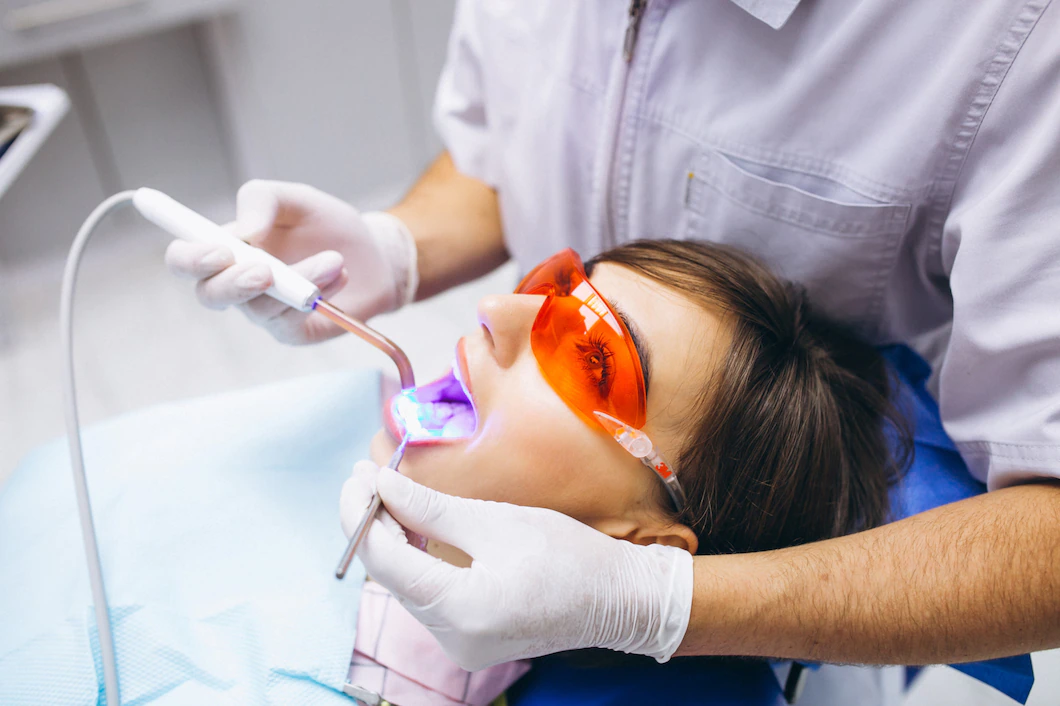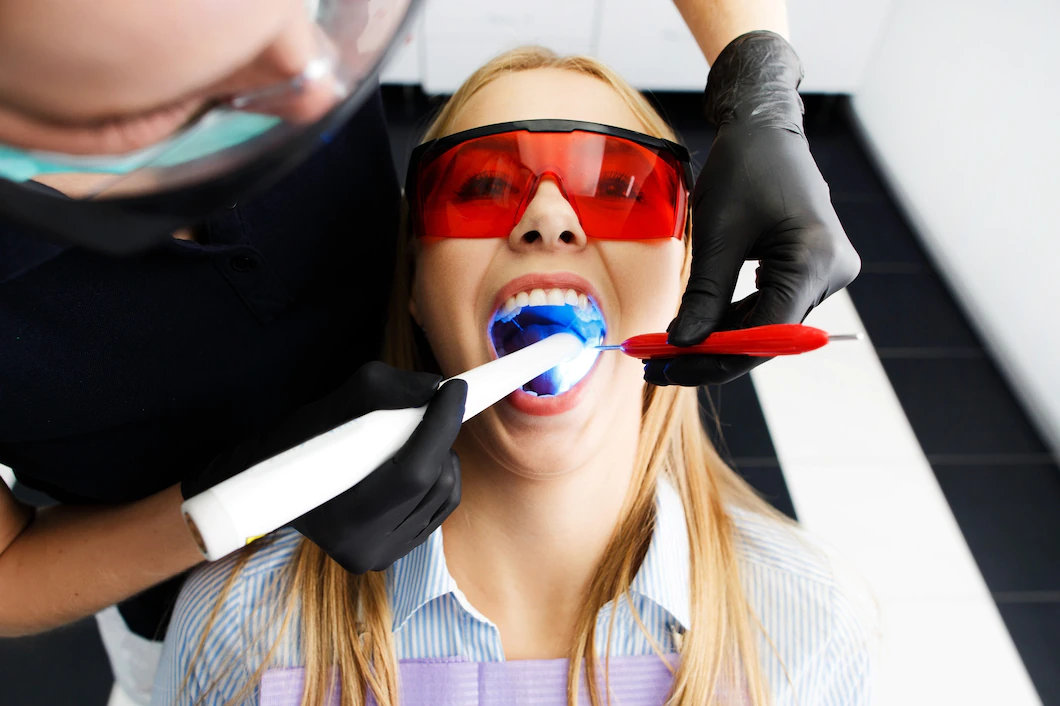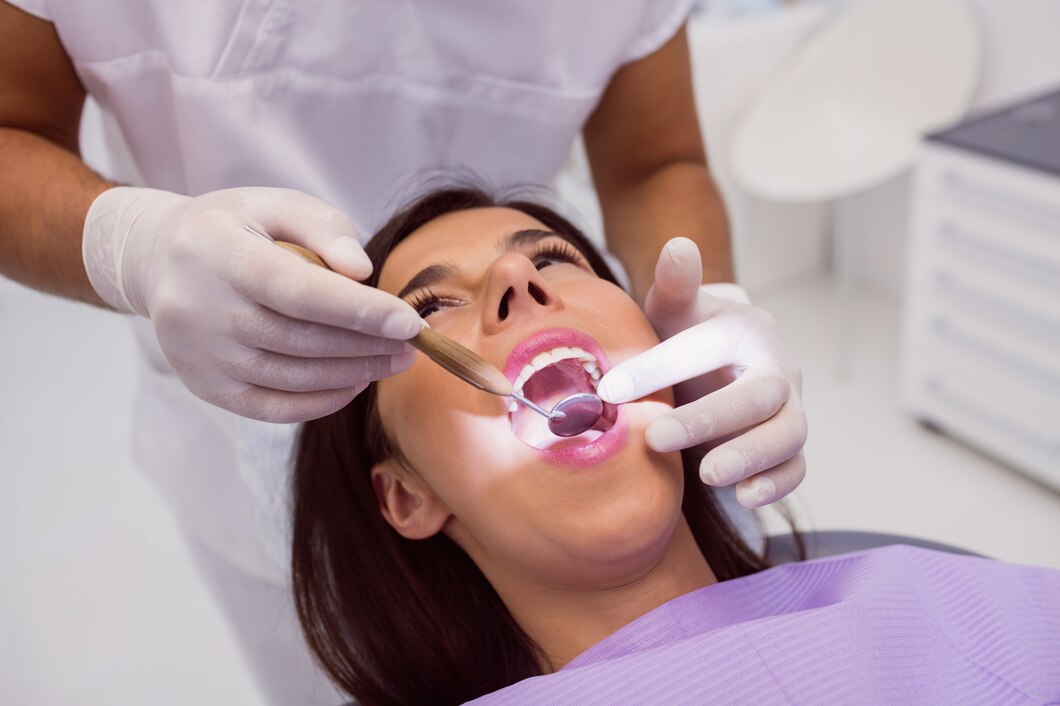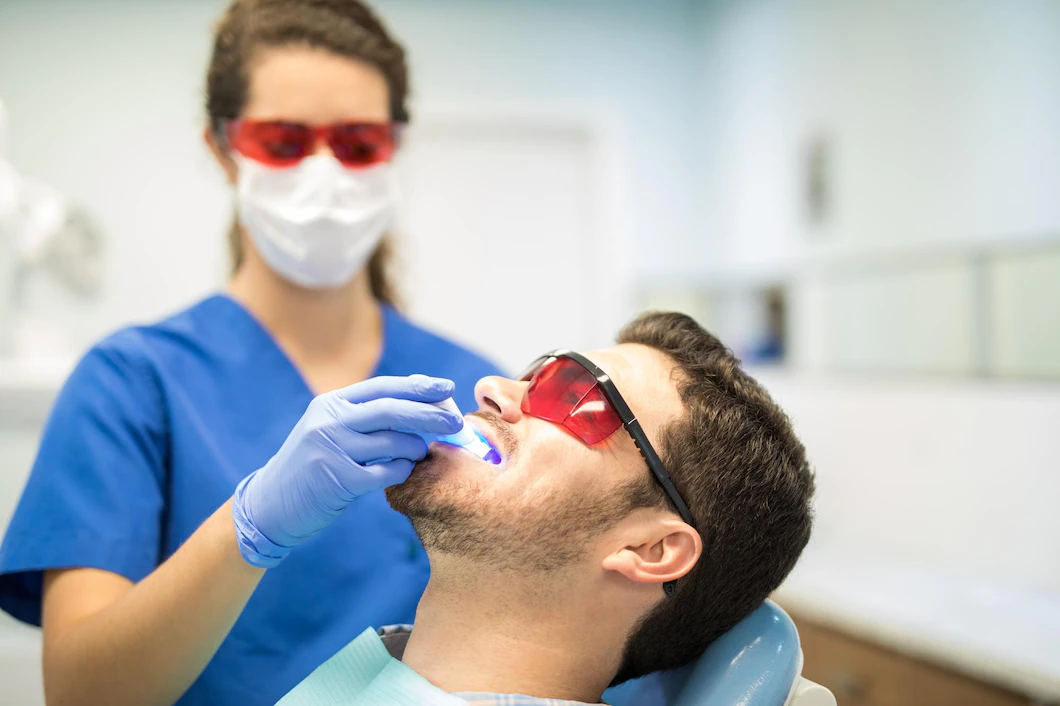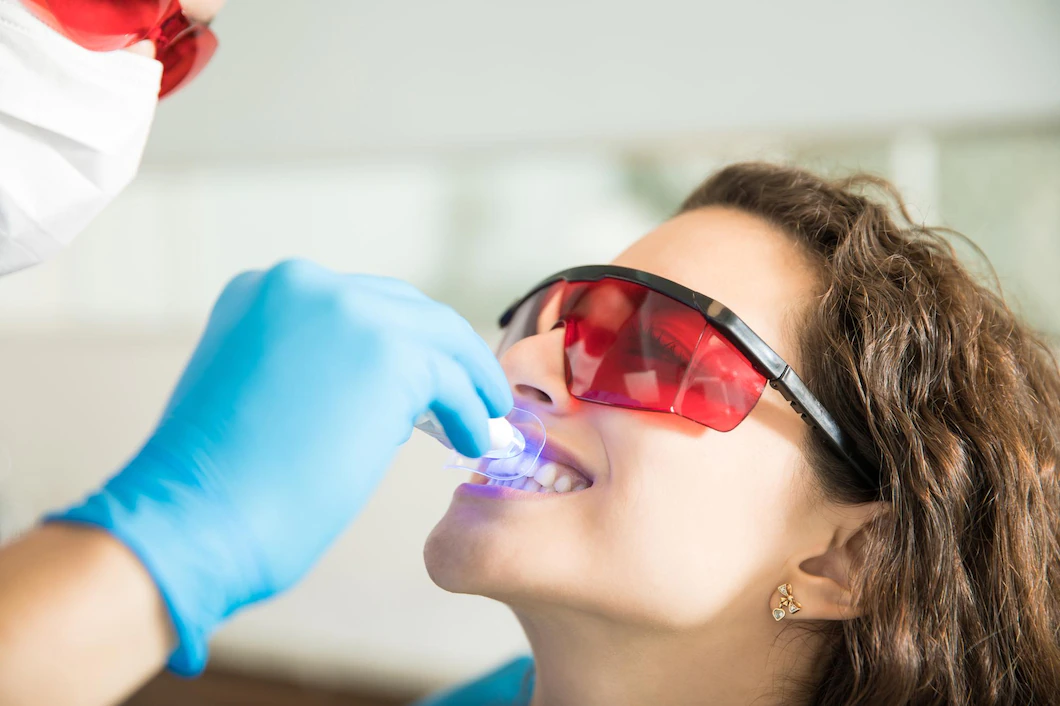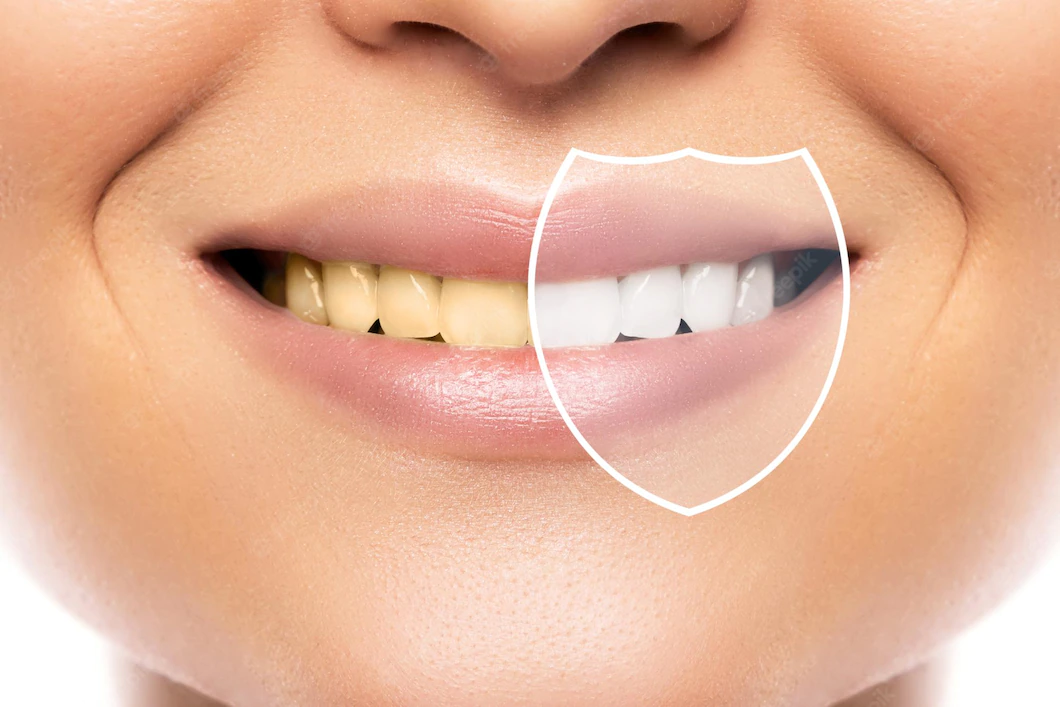Teeth Whitening
Teeth Whitening
Tooth color is unique to the person just like eye color or hair color. The ratio of the elements in the tooth, the thickness of the enamel layer, and the density of the dentine layer all determine the color of the tooth. As the mineral composition of the tooth changes with advanced age, the tooth color may get darker. Excessive use of coloring materials such as tea, coffee, and cigarettes can also lead to long-term external coloration.
For bleaching to be effective, a clean tooth surface is needed; for this, tartar cleaning should be done before bleaching. After tartar removal, bleaching can be done by two methods or a combination of these two.
Office bleaching: After the isolation of the gums, a highly concentrated bleaching agent applied to the tooth surface is activated by a laser or light source. Fast and effective bleaching is provided after about one hour.
Home bleaching: This is applied with bleaching plates specially prepared for the patient by the dentist. A certain amount of bleaching gel is put into this plate and it is used for 4-6 hours a day for 1-3 weeks.
Tooth color may get darker in the long-term in teeth that have lost their vitality and have undergone root canal treatment. In such cases, the bleaching agent is placed into the tooth after isolation. This is repeated every two days until the desired color is achieved.
It is necessary to avoid coloring drinks and foods for a while afterwards for the continuity of bleaching.
Contrary to the general belief, bleaching under dentist's control does not cause any harm to the teeth and surrounding tissues.
To choose the bleaching option most suitable for you, first the cause of the coloring should be determined by your dentist and a treatment plan should be made according to you.
How many types of bleaching methods are there?
There are 4 different methods for bleaching.
Home bleaching
Office (in a clinical setting) bleaching
Single tooth bleaching (internal bleaching)
Combined teeth bleaching (both home and office bleaching)
Which is the most effective method?
The most effective bleaching method is the combined method.
How is home bleaching applied?
Personalized bleaching plates are prepared by taking measurements from inside the mouth. A certain amount of bleaching gel (10-15% carbamide peroxide) is applied into this plate.
How long does home bleaching take?
The plate is used for at least 4-6 hours a day for 10-15 days.
How much gel should I put in the plate?
The important thing to consider in home bleaching is to not apply the gel too much, otherwise the gel might overflow through the plate and irritate the gums. In that case, the gums should be washed immediately and a cream containing vitamin E should be applied to the irritated surface.
What is office bleaching?
It is a clinically applied bleaching method. It is a suitable method for patients with time constraints. It provides effective bleaching in a much shorter time. A whitening gel is applied on the teeth by the dentist and is activated with the help of UV light or laser, taking about 1 hour. It is also known as laser bleaching.
What is combined bleaching?
It is a method where both office and home bleaching are applied together. After office or clinic application, it is supported with home bleaching for 2-3 days.
What is single tooth bleaching (internal bleaching)?
It is applied to colored teeth after root canal treatment. The filling in the tooth is removed. Bleaching gel is applied to the opened cavity. Then, the tooth is tightly closed with temporary filling. The sessions are repeated until the desired color is achieved.
Is internal bleaching harmful to the teeth?
Canal filling must be well insulated. If it is well insulated, no harm will occur.
Are there any harmful or side effects to bleaching?
Bleaching may cause sensitivity in the teeth, although a little, other than in teeth with no vitality (root canal treatment). This tooth sensitivity may occur depending on the weather or very hot or cold foods and drinks. This is a normal and expected side effect. Tooth sensitivity is often expected to pass within 24-48 hours. A physician should be consulted in any unexpected case.
What are the causes of tooth discoloration?
Lifelong physiological discoloration,
Discoloration after amalgam filling,
Use of antibiotics in infancy,
Discoloration change from inside the tooth due to root canal treatment,
Discoloration of the tooth surface due to the use of coffee, tea, tobacco, red wine, and mouthwash for a long time,
Discoloration due to bleeding inside the tooth caused by death of living tissue in the tooth as a result of trauma.
How do the teeth get white?
Bleaching is the removal of the colored organic and inorganic substances formed in the porous enamel structure on the surface of the teeth using bleaching gels (carbamide peroxide).
How long does it take for the teeth to get white?
It differs from person to person. The average time is 2-3 weeks. The more yellowing than graying there is on the teeth, the more effective the bleaching can be. Graying caused by the use of antibiotics is more difficult to bleach and may require a longer time for results.
Do I need to clean the bleaching plate?
Yes, you do. After the plates are used, they should be washed with liquid soap and rinsed thoroughly. After making sure that they are dry, you should keep them in their box.
Is bleaching permanent?
After bleaching, the color starts to fade over time. This period changes depending on the use of colored liquids (tea, coffee, wine, coke) and smoking, taking about 6 months to a year. Bleaching becomes permanent when supported with 1 or 2 sessions every 4-6 months.
What should I pay attention to while bleaching?
When bleaching, colored liquids such as tea, coffee, wine, or coke and tobacco products should be avoided. If used, the process will have an adverse reaction and the teeth will be discolored.
Will bleaching harm my teeth?
Bleaching under the control of a dentist is not harmful to the teeth. Otherwise, we would not apply it on ourselves or our loved ones.
What is laser bleaching?
Laser bleaching is used to activate the bleaching drug applied to the enamel surfaces and to shorten the time.
Hizmet Hakkında Detaylı Bilgi İçin Tıklayınız.